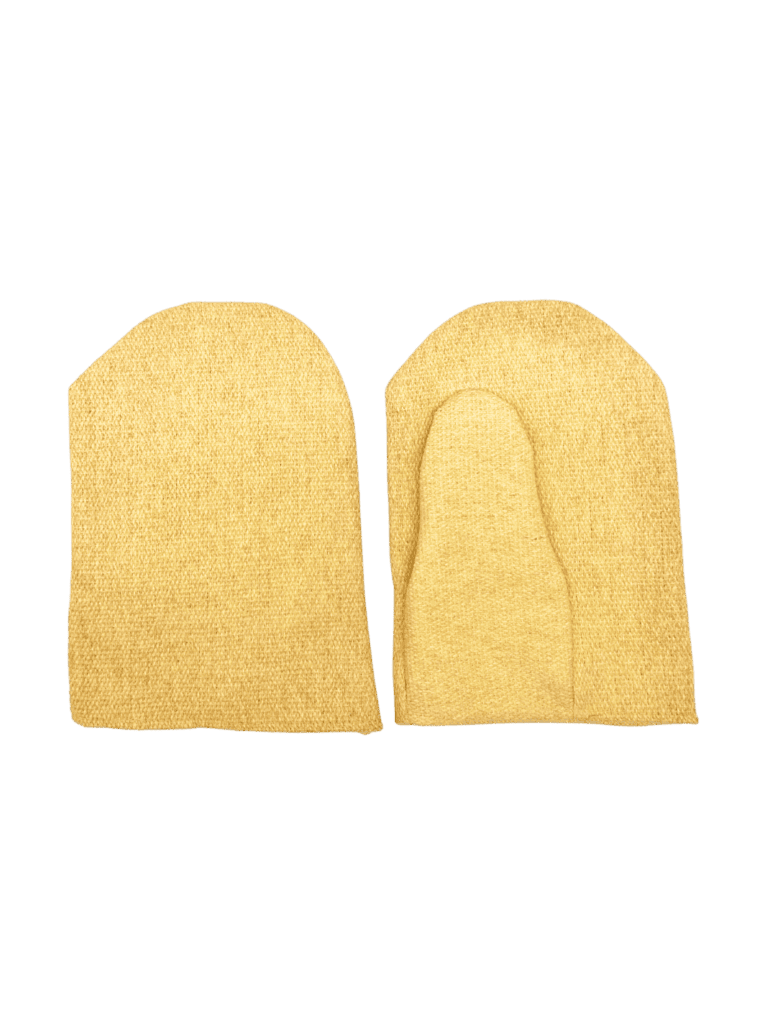
Thermal hand protection - High temperatures
Kevlar cover mitts
44-20
By: Florence Escapoulade, Product Development Manager
In the field of personal protective equipment (PPE), hand protection plays a crucial role in ensuring the safety and protection of workers exposed to extreme heat. There are a multitude of materials used in the design of high-temperature hand protection, each offering specific characteristics in terms of heat resistance, durability and comfort.
Whether you work in the metalworking, welding, foundry, petrochemical or any other industry exposed to extreme heat, it's important to understand the differences between these materials so you can make informed decisions to keep our workers safe.
Kevlar, aluminized Kevlar and fiberglass are all materials used in the manufacture of personal protective equipment (PPE), but they differ in their properties and specific uses.
Kevlar is an extremely heat-resistant synthetic fiber, making it ideal for applications requiring protection against high temperatures.
When used in the manufacture of high-temperature thermal protection gloves, Kevlar offers effective protection against burns caused by high temperatures, and can withstand temperatures of up to 650 F (under certain conditions).
In addition to their thermal resistance, Kevlar hand protectors also offer good resistance to abrasion, cuts and punctures, making them suitable for exposure to sharp objects.
It's important to note that although Kevlar hand protectors offer high thermal protection, they are not fire-resistant.
Aluminized Kevlar is a variant of Kevlar that has been coated with a layer of aluminum to improve its heat resistance. Natpro aluminized Kevlar hand protectors, garments and aprons are designed to offer high thermal protection in high-temperature environments.
They offer effective protection against burns caused by high temperatures, and can withstand temperatures up to 650F (under certain conditions).
The aluminum coating on aluminized Kevlar reflects heat, helping to protect against burns caused by high temperatures. It also reduces heat transmission through the material, offering additional thermal protection.
Like Kevlar production, in addition to their thermal resistance, aluminized Kevlar hand protectors and garments also offer good resistance to abrasion, cuts and punctures, making them suitable for exposure to sharp objects.
Here too, it's important to note that although aluminized Kevlar gloves and garments offer high thermal protection, they are not fire-resistant.
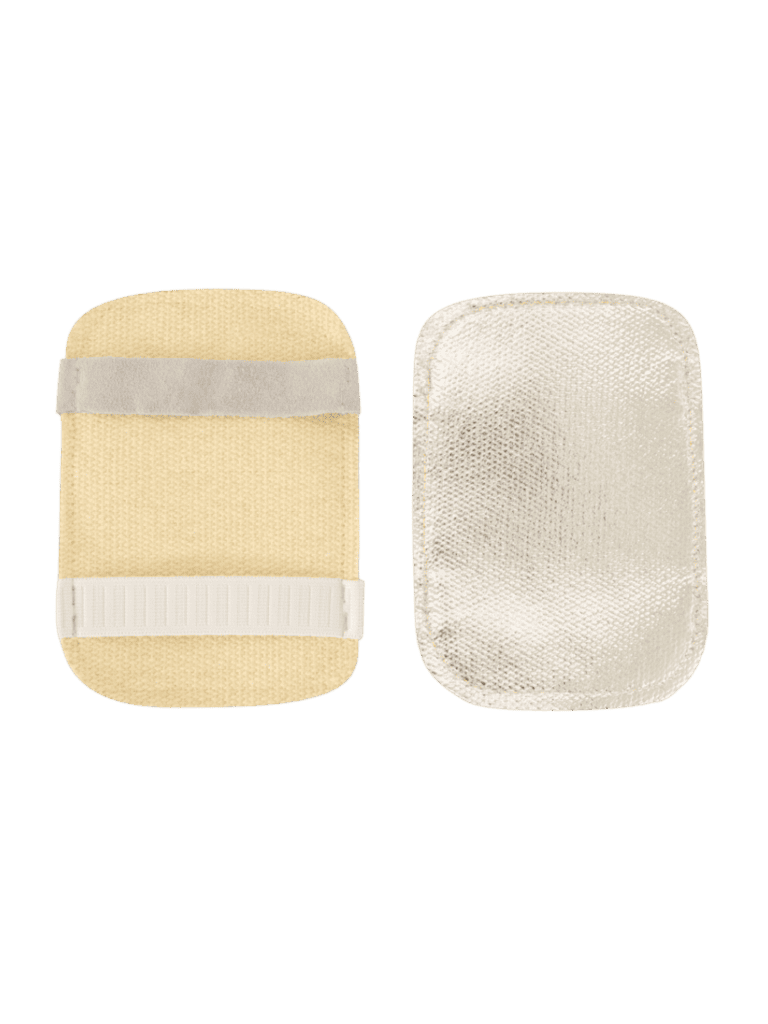
Aluminized solutions
Thermal hand protection - High temperatures
Kevlar and aluminized Kevlar hand protectors
HP44
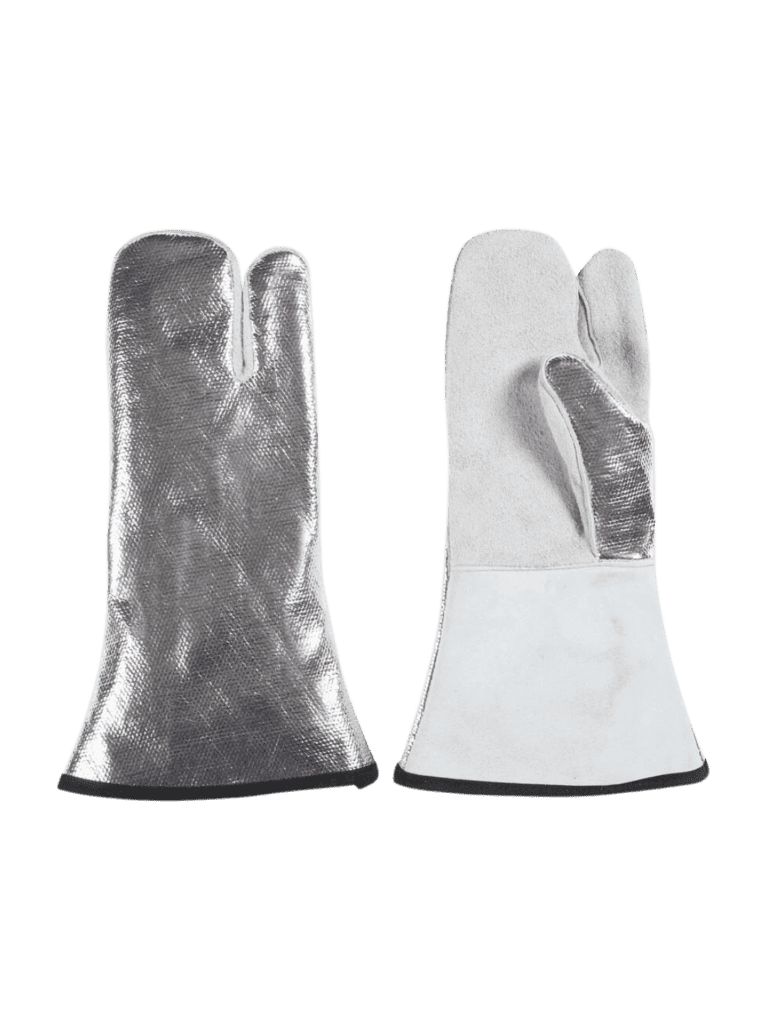
Aluminized solutions
Thermal hand protection - High temperatures
3-finger gloves in leather and aluminized carbon
3324-024
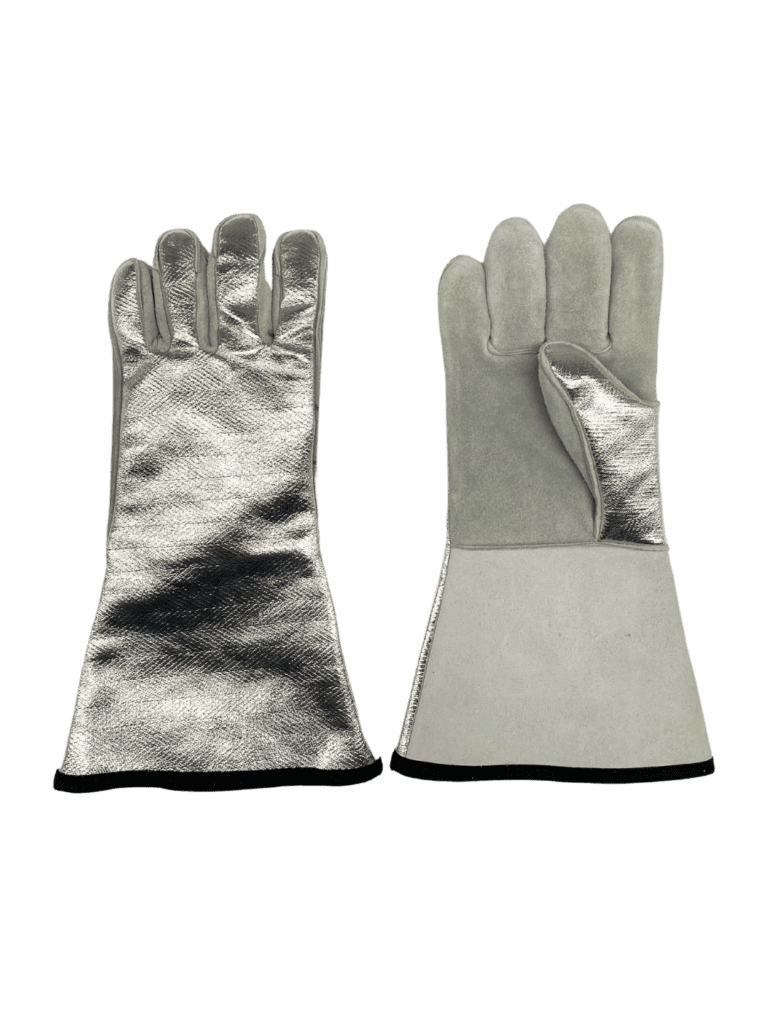
Aluminized solutions
Thermal hand protection - High temperatures
Kevlar and aluminized carbon gloves with leather palm
9324-024
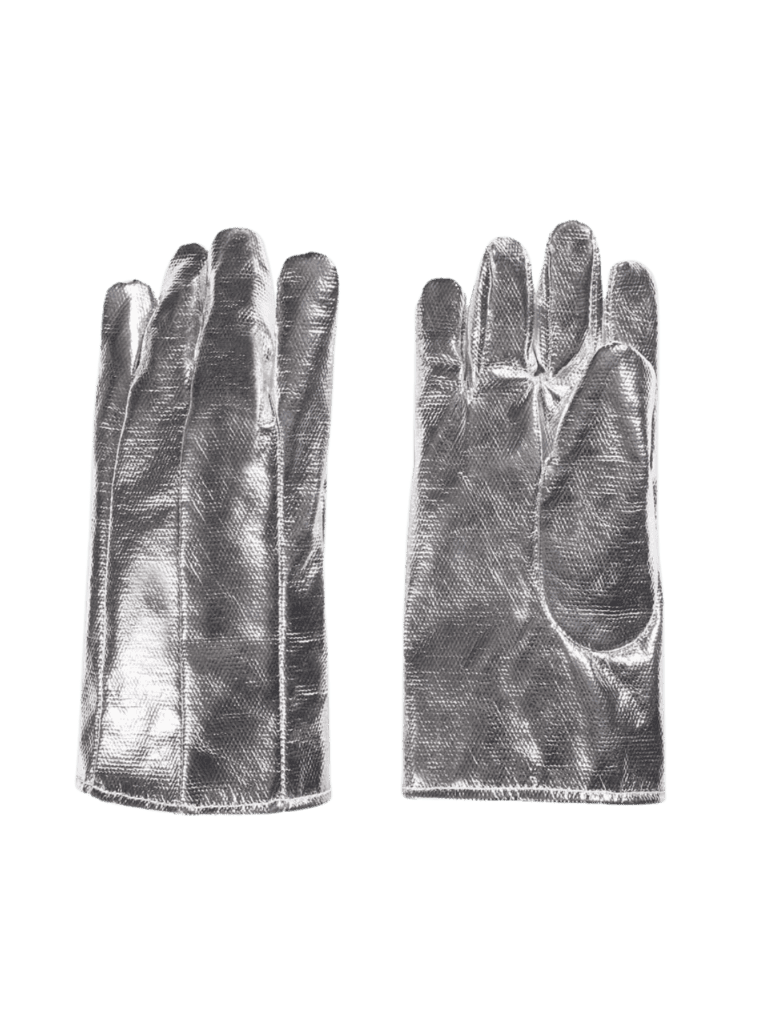
Aluminized solutions
Thermal hand protection - High temperatures
Aluminized Kevlar gloves
1424-164
Fiberglass is a material that offers good resistance to heat and flame, making it an appropriate choice for applications requiring thermal protection.
The fiberglass used in mittens and gloves is woven to form a thermal barrier between the hand and the heat source. This reduces heat transmission through the material, providing additional thermal protection. High-temperature fiberglass thermal hand protection can withstand temperatures of up to 1300F (under certain conditions), in addition to offering abrasion and cut resistance. Fiberglass protective solutions offer thermal protection, but are not resistant to direct and prolonged exposure to fire.
As with all high-temperature thermal protection products, it is also important to follow the manufacturer's recommendations for the use and care of fiberglass handguards to ensure their effectiveness and durability.
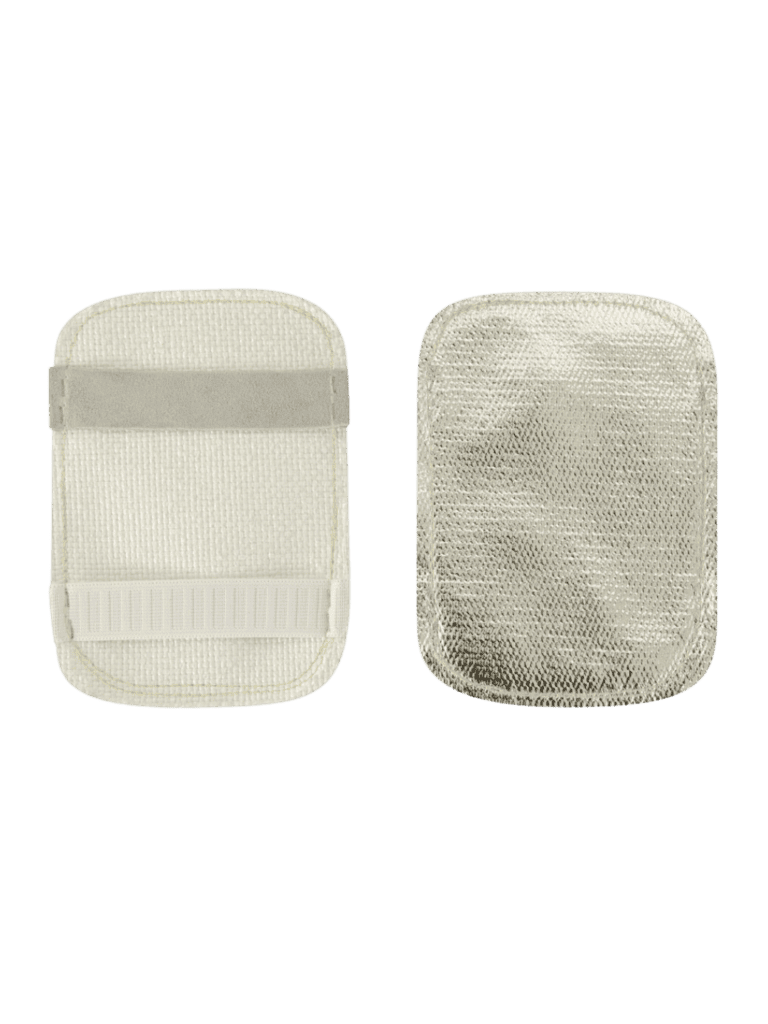
Aluminized solutions
Thermal hand protection - High temperatures
Hand protector in aluminized Kevlar and fiberglass
HP427
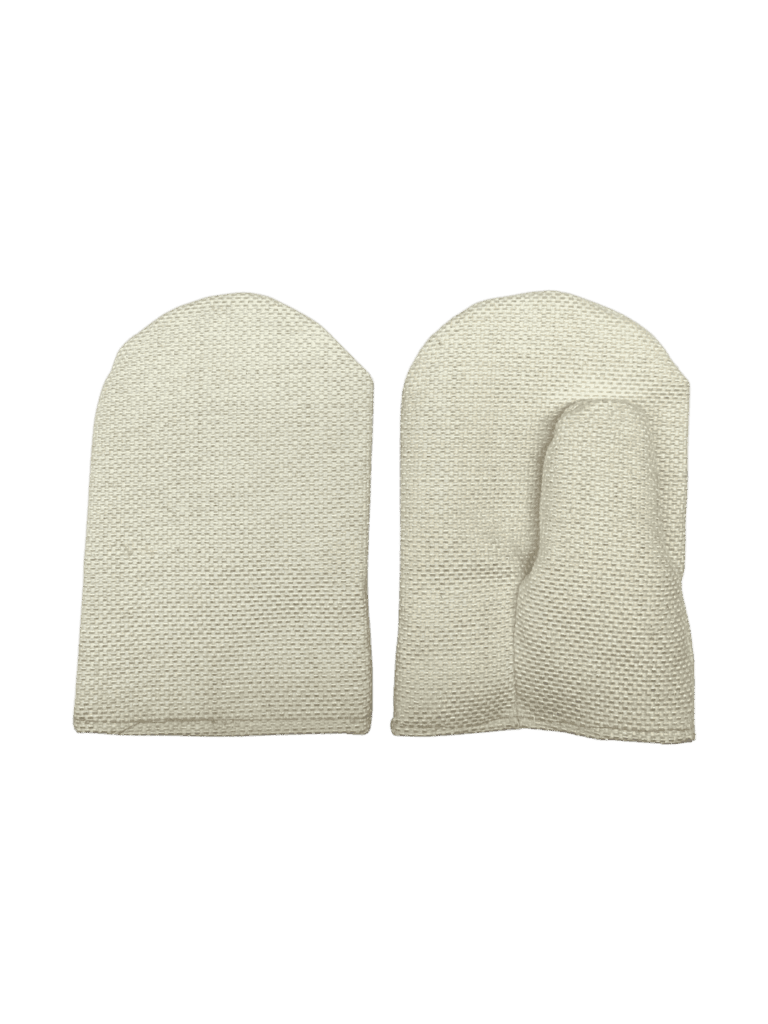
Thermal hand protection - High temperatures
Fiberglass cover mitts
428-20
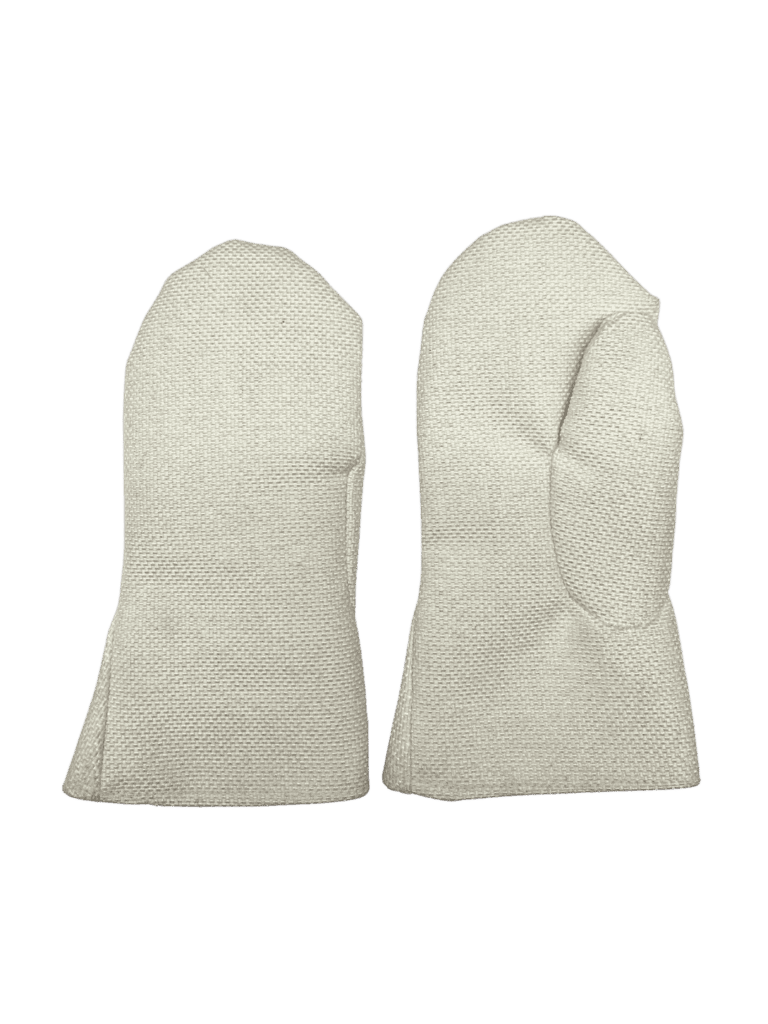
Thermal hand protection - High temperatures
18″ fiberglass mittens
1027-268
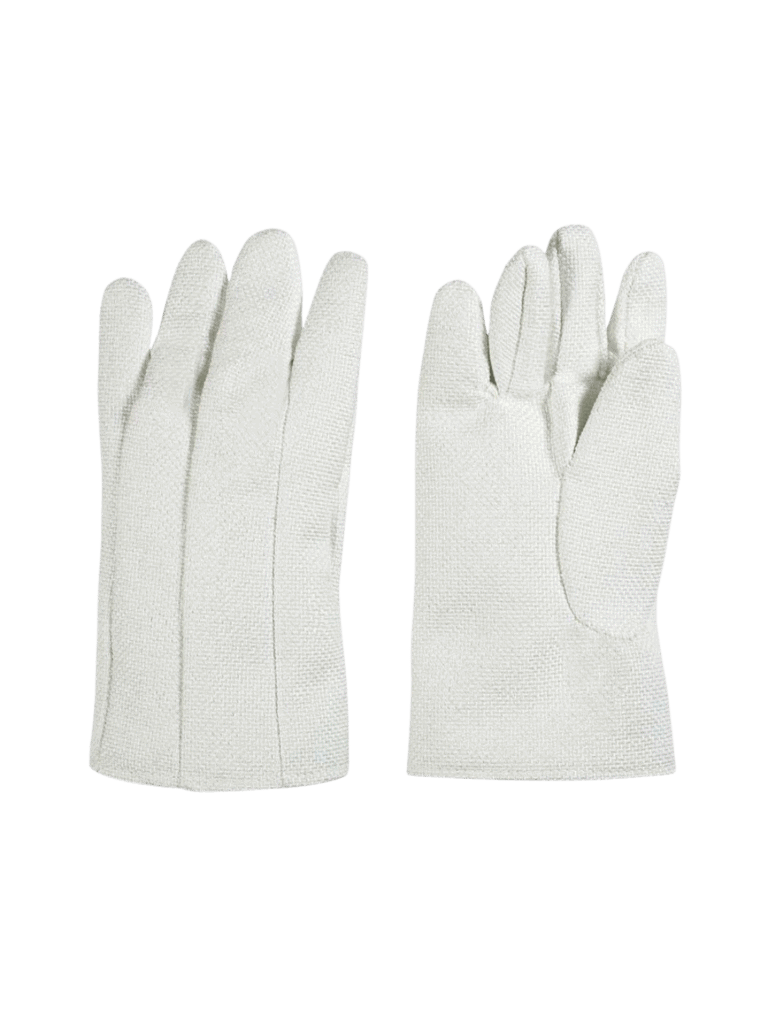
Thermal hand protection - High temperatures
14″ fiberglass gloves
1427-224
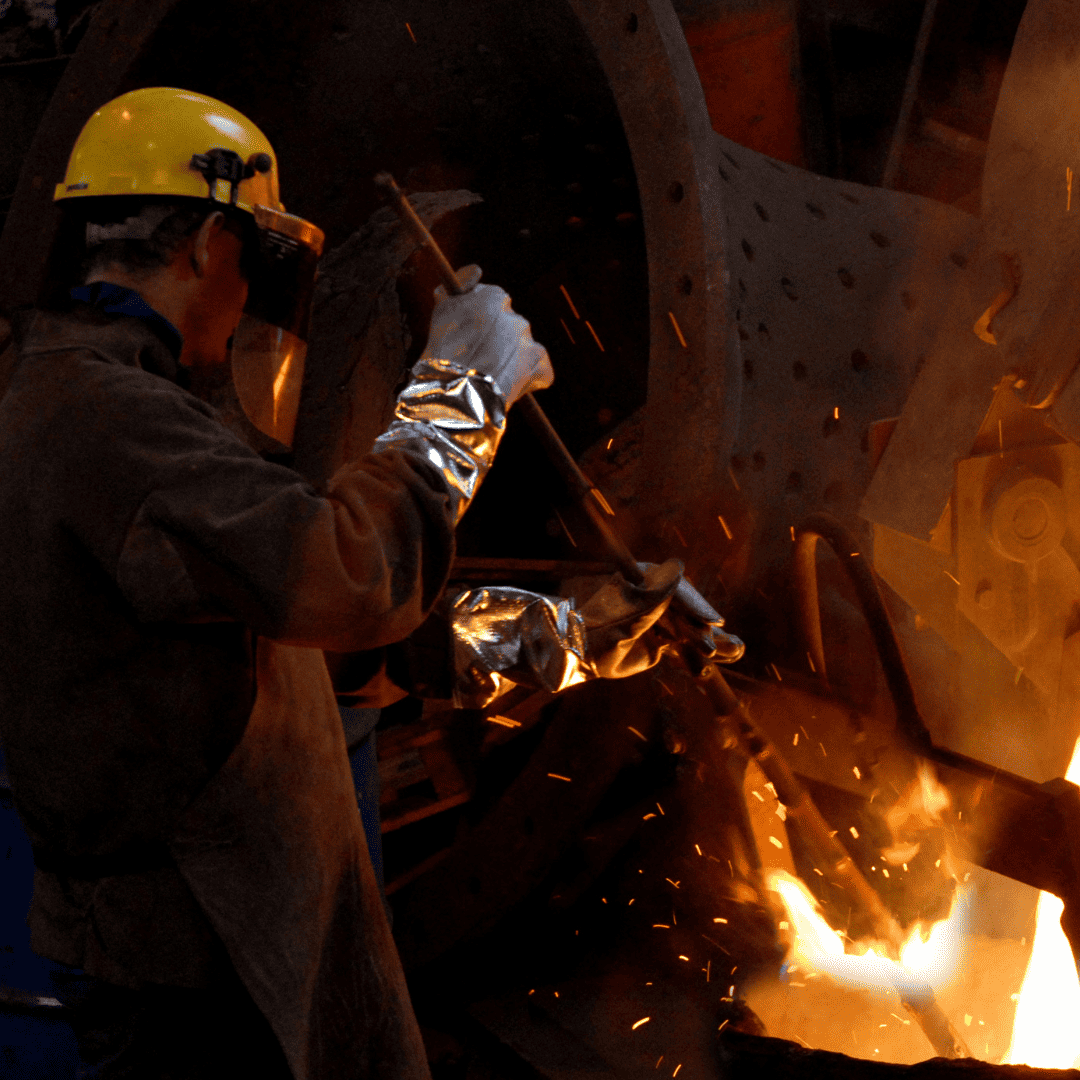
Can't find the solution you're looking for?